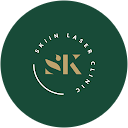
Laser technology is not only advancing rapidly but also offers profound solutions to various health and beauty issues. From hair removal to skin rejuvenation, tattoo removal to scar revision, lasers have revolutionised the way we approach cosmetic enhancements. However, behind the outstanding results lies a complex interplay of physics and biology that shapes the very essence of laser light.
In this article, we will explain what laser light is, the science behind it, and the impact of specific wavelengths on aesthetic treatments. By understanding the fundamental principles of laser light, we can better understand the remarkable capabilities lasers offer and how they deliver safe and effective treatments.
Fundamentals of Light and Wavelengths
As a form of electromagnetic radiation, light comes in a wide spectrum, ranging from radio waves to gamma rays. Within this electromagnetic spectrum, visible light, for example, only occupies a small portion from approximately 400 to 700nm.
A wavelength describes the distance between successive peaks of a wave, which determines the colour of the light, with shorter wavelengths appearing blue/violet and longer wavelengths appearing red. Frequency describes the number of wave cycles passing a fixed point per unit of time and is inversely proportional to wavelength.
High-energy wavelengths are characterised by shorter wavelengths and higher frequencies. This means they have a greater energy per photon compared to lower-energy wavelengths.
What is Laser Light?
Laser light, short for “Light Amplification by Stimulated Emission of Radiation”, is characterised by its coherence, monochromaticity, and collimation, unlike conventional light sources, which emit a broad spectrum of wavelengths in all directions.
Coherence
Coherence means that all the photons emitted are in phase with each other, leading to a consistent wavelength that travels in a uniform direction. This coherence allows laser light to maintain its intensity over long distances without significant divergence, resulting in a tightly focused beam.
Monochromaticity
Laser light consists of a single wavelength or colour, compared to the many different wavelengths found in natural light sources. This purity of colour enables lasers to target specific molecules or chromophores in the skin with precision, making them highly effective in medical and aesthetic applications.
Collimation
Collimation means that the beam remains narrow and focused over long distances. Unlike conventional light sources that spread out in all directions, laser light can be tightly focused into a small spot, allowing for precise targeting of tissues or structures.
The Science Behind Laser Light
The unique properties of laser light are a result of the process of stimulated emission as well as population inversion.
Stimulated Emission
In the process of stimulated emission, an excited atom or molecule in a high-energy state is stimulated by an incoming photon to transition to a lower-energy state, emitting a second photon in the process. This emitted photon has the same frequency, phase, and direction as the stimulating photon, leading to the amplification of light.
Population Inversion
In a typical thermal equilibrium, most atoms or molecules reside in the ground state, with only a small fraction in excited states. However, a population inversion must be established to sustain stimulated emission and generate coherent light, where more atoms or molecules occupy higher energy states than lower ones. This is typically achieved through external energy sources such as electrical discharges or optical pumping.
The combination of stimulated emission and population inversion leads to the amplification of light within the laser medium, resulting in the formation of a highly collimated and coherent beam of laser light. This light can then be manipulated and focused using optical elements such as mirrors and lenses to achieve desired outcomes.
Wavelengths and Their Impact on Aesthetic Treatments
Wavelengths play an important role in determining the effectiveness and safety of laser-based aesthetic treatments. Different wavelengths of light are absorbed by various chromophores in the skin, such as melanin, haemoglobin, and water, leading to selective photothermolysis—the process of heating and destroying target tissues while leaving surrounding tissue unharmed.
Melanin Absorption
Melanin, the pigment responsible for skin and hair colour, absorbs light primarily in the visible and near-infrared spectrum. Wavelengths around 600nm to 1100nm are commonly used for treatments targeting melanin-rich structures, such as hair follicles in laser hair removal and pigmented lesions like age spots and freckles. Longer wavelengths penetrate deeper into the skin, making them suitable for treating finer and deeper hair follicles while minimising the risk of epidermal damage in individuals with darker skin types.
Haemoglobin Absorption
Haemoglobin, the protein in red blood cells responsible for oxygen transport, absorbs light in the visible spectrum, particularly in the range of 500nm to 600nm. This makes wavelengths in the green and yellow range effective for vascular lesions, such as spider veins, port wine stains, and rosacea. The absorption of laser energy by haemoglobin leads to coagulation and subsequent elimination of blood vessels, resulting in the clearance of vascular lesions.
Water Absorption
Water absorbs light across a broad spectrum, with peak absorption occurring in the infrared range. Laser wavelengths above 1300nm, known as the “water absorption window,” are used for treatments that target water-containing tissues, such as skin tightening and wrinkle reduction. These longer wavelengths penetrate deeper into the dermis, stimulating collagen production and inducing tissue remodelling without causing significant damage to the epidermis.
Applications of Laser Light in Aesthetic Treatments
Laser Hair Removal
Laser hair removal is one of the most popular cosmetic procedures globally, offering a long-lasting solution for unwanted hair on virtually any part of the body. The principle behind laser hair removal is selective photothermolysis, where melanin in the hair follicle absorbs laser energy, leading to thermal damage and subsequent destruction of the follicle without harming surrounding tissues. The AlexStar alexandrite laser emits light at a wavelength of 760nm and 1060nm which is ideal for lighter as well as darker skin types while the MeDioStar diode laser operates at a wavelength of 755nm, 810nm and 940nm and is suitable for various skin types.
Skin Rejuvenation
Laser skin rejuvenation includes various treatments to improve skin tone, texture, and overall appearance. Common laser procedures for skin rejuvenation include fractional laser resurfacing with the Dermablate Cool Laser, which operates at a wavelength of 2940nm, stimulates collagen production and promotes skin tightening. Non-ablative laser treatments with a diode laser such as the MeDioStar emits a wavelength of 810nm and 940nm, which targets pigmentation, fine lines, and wrinkles without damaging the outer layer of the skin. Laser skin rejuvenation can address a wide range of concerns, including sun damage, age spots, acne scars, and uneven skin tone.
Tattoo Removal
Laser tattoo removal is a highly effective and safe method for eliminating unwanted tattoos with minimal scarring. Lasers, such as the Q-switched NanoStar and dual-wavelength picosecond laser PicoStar (532/1064nm), deliver high-intensity pulses of light that break down the ink particles in the skin into smaller fragments. These fragmented ink particles are then gradually eliminated by the body’s immune system, leading to the gradual fading and eventual clearance of the tattoo. Multiple treatment sessions may be required to achieve complete tattoo removal, depending on factors such as ink colour, tattoo size, and depth.
Vascular Lesion Treatment
Lasers are also used to treat vascular lesions such as spider veins, port wine stains, and rosacea. Wavelengths of 532nm emitted by the PROGreen or 577nm utilised by the PROYellow targeting haemoglobin in the blood vessels selectively heat and coagulate the vessels, leading to their destruction. Laser treatment of vascular lesions is non-invasive, with minimal downtime and high patient satisfaction rates.
Scar Revision
Laser technology offers effective solutions for improving the appearance of scars resulting from acne, surgery, or injury. Fractional laser resurfacing and ablative laser treatments with an ideal wavelength of 2940nm emitted by the Dermablate Cool Laser can help reduce scars by promoting collagen remodelling and smoothing the skin’s texture. The PicoStar’s wavelengths of 532nm and 1064nm also achieve scar reduction while remaining gentle with the surrounding skin tissue.
Conclusion
By using the unique properties of laser light, advanced laser technology has emerged as a game changer in the aesthetic beauty industry. Understanding how laser light works, means understanding how to deliver targeted treatments with precision and accuracy, achieving optimal results and minimising risks. To speak to one of our experts about anything in this article, or for any information on our lasers, contact us today!










